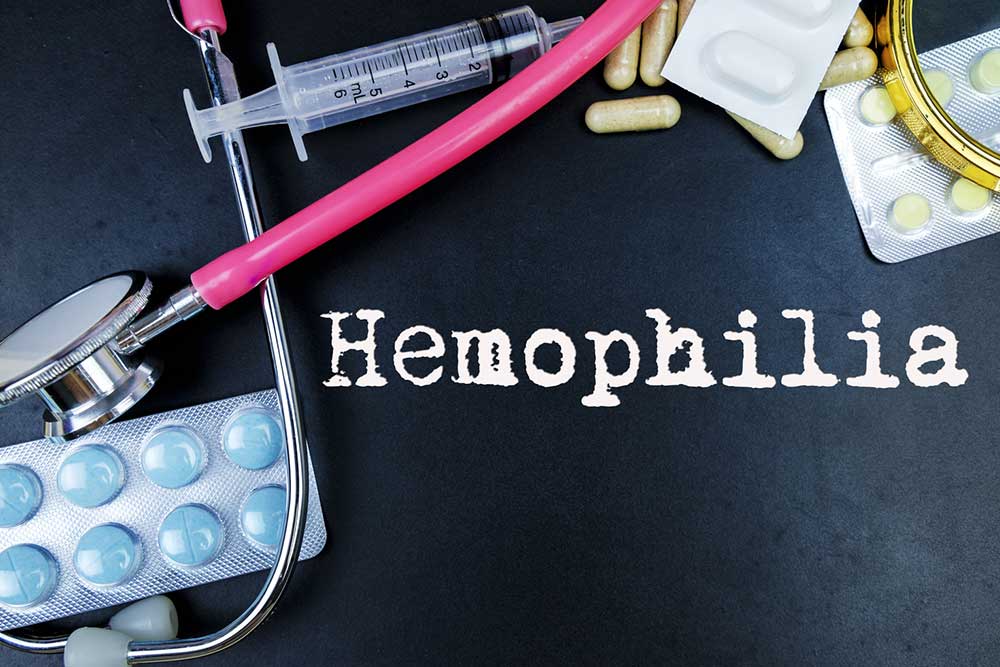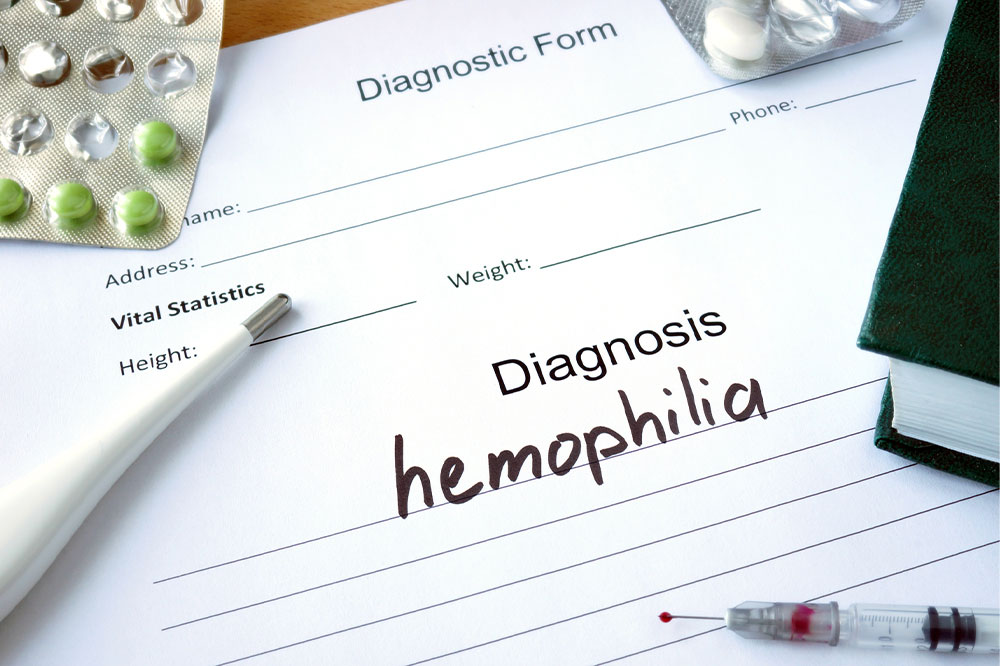Comprehensive Guide to Hemophilia: Causes, Symptoms, and Management Strategies
This comprehensive guide explores hemophilia, a hereditary bleeding disorder, detailing its causes, symptoms, risks, and the latest management options. Early diagnosis and modern treatments like factor replacement and gene therapy have improved patient outcomes significantly. Understanding inheritance patterns and recognizing symptoms can help manage the condition effectively, preventing severe complications such as joint damage or internal bleeding. With appropriate medical care and lifestyle adjustments, individuals with hemophilia can live active, healthy lives. This detailed overview aims to inform patients, caregivers, and healthcare providers about hemophilia’s complexities and treatment advancements.

Hemophilia is a unique genetic bleeding disorder characterized by the body's inability to form blood clots effectively, leading to prolonged bleeding episodes. This condition, although rare, can significantly impact an individual's quality of life if not diagnosed early and managed appropriately. Understanding the underlying causes, recognizing the symptoms, and knowing the associated risks are crucial steps in controlling this condition and preventing serious complications. This comprehensive guide explores hemophilia in detail, covering the causes, types, symptoms, potential risks, and modern management techniques to help patients and caregivers better understand and handle this condition.
What is Hemophilia?
Hemophilia is a hereditary disorder that affects the blood's clotting mechanism. Normally, when a person sustains an injury, the body initiates a complex process involving clotting factors—specialized proteins that work together to form a blood clot, sealing the wound and preventing excessive blood loss. In individuals with hemophilia, deficiencies or functional abnormalities in specific clotting factors impair this process, resulting in persistent bleeding either externally or internally.
Types of Hemophilia: Distinguishing Variants
There are primarily two types of hemophilia, distinguished by the specific clotting factors affected:
Hemophilia A: The most common form, accounting for approximately 80% of cases, caused by a deficiency of clotting factor VIII.
Hemophilia B: Also known as Christmas disease, caused by a deficiency of clotting factor IX. It occurs less frequently than Hemophilia A.
Both types are inherited in an X-linked recessive pattern, meaning the defective gene is located on the X chromosome. This inheritance pattern explains why males, who have only one X chromosome, are more frequently affected, whereas females typically act as carriers without manifesting severe symptoms. Rare cases of acquired hemophilia can occur due to immune reactions where the body's immune system develops antibodies against clotting factors, leading to bleeding even in individuals without a genetic defect.Genetic Basis and Inheritance
Hemophilia is primarily inherited through mutations affecting the genes responsible for producing clotting factors VIII and IX. Since these genes are located on the X chromosome, the inheritance pattern is sex-linked. Females possess two X chromosomes; therefore, a mutation in one typically makes them carriers who can pass the defective gene onto their children. Males, having only one X chromosome, are more susceptible; if they inherit the mutated gene, they will develop the disease. This pattern explains the higher prevalence of hemophilia in males and underscores the importance of genetic counseling, especially for families with a history of bleeding disorders.
Recognizing the Signs and Symptoms of Hemophilia
Symptoms of hemophilia can vary depending on the severity of clotting factor deficiency. Individuals with mild hemophilia might experience bleeding only after significant injuries or surgeries, while those with severe forms may suffer spontaneous bleeding episodes.
Easy bruising: Frequent or large bruises from minor bumps.
Prolonged bleeding: Bleeding that lasts longer than expected from cuts or injuries.
Joint hemorrhages: Bleeding into joints causing pain, swelling, and immobility, often first seen in the ankles, knees, or elbows.
Internal bleeding: Bleeds into muscles or internal organs, which can be life-threatening if not promptly treated.
Unusual bleeding after medical procedures: Excessive bleeding after surgeries, dental work, or vaccinations.
In severe cases: Bleeding into the brain (intracranial hemorrhage), which can be fatal or lead to permanent disability if not addressed immediately.
It's important for individuals with unexplained symptoms like frequent bruising or joint swelling to seek medical evaluation for early diagnosis.Potential Risks and Complications
If unmanaged, hemophilia can lead to significant health complications. Repeated joint bleeding can cause chronic joint damage, leading to deformities, pain, and reduced mobility. Internal bleeding in vital organs such as the brain can result in life-threatening conditions, including strokes or neurological deficits. Additionally, individuals with hemophilia are at increased risk of developing inhibitors—antibodies that neutralize treatment clotting factors—making management more challenging. Recognizing these risks emphasizes the need for ongoing medical supervision and tailored treatment plans to prevent serious outcomes.
Diagnostic Procedures
Diagnosing hemophilia involves a combination of blood tests and medical history assessment:
Clotting factor assays: Measuring the levels of clotting factors VIII or IX to determine deficiency.
Activated Partial Thromboplastin Time (aPTT): A blood test indicating how long it takes blood to clot.
Genetic testing: Identifies mutations in the genes responsible for clotting factors, confirming diagnosis and informing family planning.
Early diagnosis is crucial for implementing appropriate treatment strategies and preventing irreversible damage.Modern Treatment Methods
Advancements in medical science have dramatically improved the quality of life for individuals with hemophilia. The primary treatment involves replacing the missing clotting factors through various forms:
Factor replacement therapy: Infusions of clotting factor concentrates, either on a regular schedule for prophylaxis or as needed for bleeding episodes.
Desmopressin (DDAVP): A medication that stimulates the release of stored clotting factor VIII in mild Hemophilia A cases.
Inhibitor management: Immune tolerance induction to reduce the formation of inhibitors.
Gene therapy: A newer frontier offering potential for long-term correction by introducing functional genes into the patient's cells, though still under research and clinical trials.
Alongside medication, physical therapy, avoiding high-risk activities, and regular monitoring form the pillars of comprehensive care for those affected.Living with Hemophilia: Tips and Support
Living with hemophilia requires a combination of medical management, lifestyle adjustments, and emotional support:
Preventive care: Regular physical activity approved by healthcare providers can strengthen muscles and reduce joint issues.
Education: Patients and caregivers should be well-informed about the disorder, recognizing early signs of bleeding, and knowing how to administer treatment at home if necessary.
Emergency preparedness: Carrying medical ID and ensuring quick access to medical care during an emergency.
Support networks: Joining hemophilia foundations or support groups can provide emotional support and practical advice.
Diet and lifestyle: Maintaining a healthy diet, avoiding alcohol, and minimizing activities with a high risk of injury.
Through a combination of medical intervention and lifestyle management, individuals with hemophilia can lead active, productive lives while minimizing health risks.Conclusion
Hemophilia remains a challenging but manageable condition with proper medical care, early detection, and a proactive approach. Advances in therapies, especially gene therapy, hold promise for future cures. Awareness, prompt diagnosis, and ongoing treatment are essential to prevent severe complications and improve life quality for those affected. If you suspect symptoms or have a family history, consult a healthcare professional for testing and personalized management strategies to ensure the best possible outcomes.





